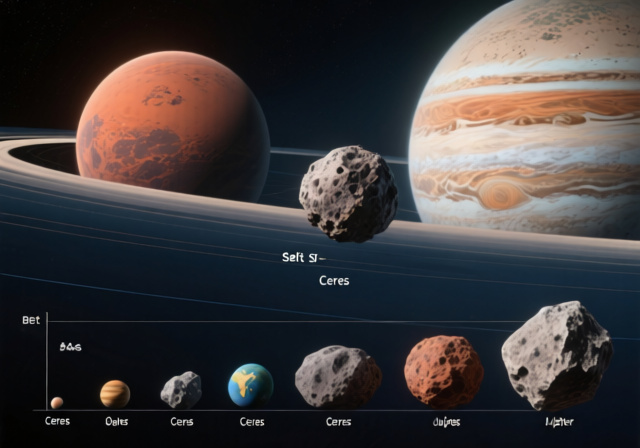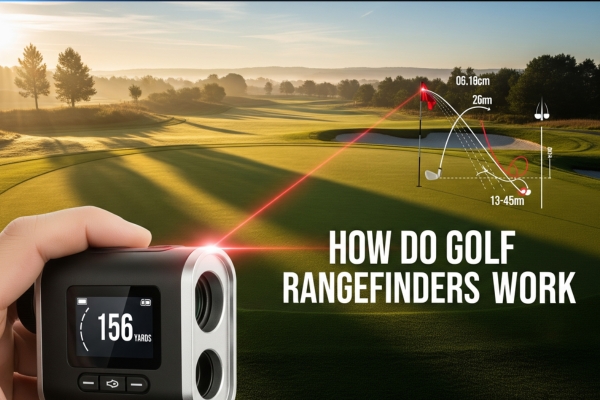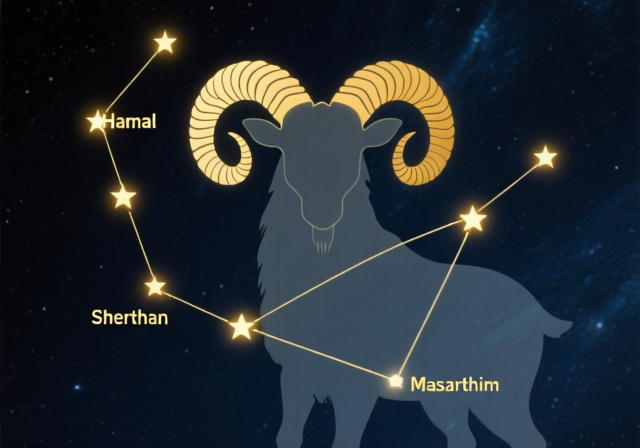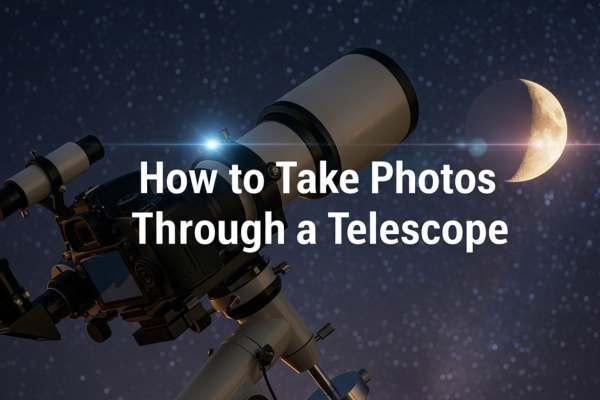



I’ve spent the last decade testing optical equipment, and one question that constantly comes up is how these pocket-sized devices can measure distances with such incredible accuracy. Golf rangefinders have revolutionized the game, but the technology inside them is far more sophisticated than most golfers realize.
Whether you’re a curious golfer wanting to understand your equipment better or someone fascinated by measurement technology, I’ll break down exactly how these devices work – from the fundamental physics principles to the advanced signal processing that happens in milliseconds.
We’re talking about devices that can accurately measure distances to within a yard from over 1,000 yards away. That’s measuring the length of ten football fields with the precision of a single stride. The technology required to achieve this is genuinely remarkable, combining advanced optics, laser physics, and in some cases, satellite navigation systems that would have been military-grade just two decades ago.
Golf rangefinders operate using two fundamentally different technologies, each with distinct physics principles and measurement approaches. Understanding these differences is crucial for appreciating how your rangefinder delivers those precise yardage numbers.
Laser rangefinders dominate the golf market, and for good reason. They use a principle called “time-of-flight” measurement, which sounds simple but requires incredibly sophisticated technology to execute accurately.
The basic concept involves sending out a laser pulse, timing how long it takes to bounce off a target and return, then calculating distance using the speed of light. Since light travels at approximately 186,282 miles per second (299,792,458 meters per second in a vacuum), we’re dealing with incredibly small time intervals – we’re measuring in nanoseconds (billionths of a second).
Here’s the fundamental formula that every laser rangefinder uses:
Distance = (Speed of Light × Time) ÷ 2
We divide by two because the laser has to travel to the target and back, so the total distance traveled is twice the actual distance to the target. For a target 150 yards away, the laser light completes its round trip in approximately 0.0000009 seconds – that’s 900 nanoseconds.
GPS rangefinders work on an entirely different principle called satellite triangulation. Instead of actively measuring distance to a specific target, they determine your position on Earth and compare it to pre-mapped course data.
The GPS receiver in your rangefinder communicates with at least four satellites orbiting Earth at about 12,550 miles above the surface. Each satellite continuously broadcasts its position and the current time. By measuring the time delay between when the signal was sent and when it arrives, the rangefinder calculates its distance from each satellite.
With four or more satellite signals, the device can triangulate your exact position using a process called trilateration. It then compares your position to a database of mapped golf course features – flagsticks, hazards, and course boundaries – to provide distance information.
Let me walk you through what actually happens when you press that button on a laser rangefinder. It’s a sequence of events that occurs faster than you can blink, yet involves multiple sophisticated components working in perfect synchronization.
When you activate the rangefinder, a laser diode generates a pulse of infrared light, typically at a wavelength of 905 nanometers. This wavelength is chosen because it’s invisible to the human eye (for safety) and travels well through the atmosphere with minimal absorption.
The laser pulse is incredibly brief – usually lasting between 10 and 50 nanoseconds. Despite this short duration, the pulse contains enough photons to travel to the target and return with a detectable signal. The laser is collimated through a lens system to create a narrow beam, typically spreading at about 1.5 milliradians, which means the beam diameter increases by about 1.5 feet for every 1,000 feet of travel.
When the laser pulse hits the flagstick, a small portion of the light reflects back toward the rangefinder. Most surfaces reflect only a tiny fraction of the incident light – a white flagstick might reflect 80% of the light, while a dark tree trunk might reflect only 10%.
The amount of reflected light follows the inverse square law, meaning the signal strength decreases with the square of the distance. This is why rangefinders have maximum range limitations – beyond a certain distance, the returning signal becomes too weak to detect reliably.
The returning laser light enters the rangefinder through a receiving lens, which focuses it onto a photodiode detector. This detector converts the light signal into an electrical pulse. The challenge here is distinguishing the weak returning signal from background noise and other light sources.
Modern rangefinders use avalanche photodiodes (APDs) that can detect individual photons. When a photon strikes the APD, it triggers an avalanche of electrons, amplifying the signal by a factor of 100 or more. This amplification is crucial for detecting the weak returning signals from distant targets.
The rangefinder’s timing circuit measures the interval between laser emission and signal detection with incredible precision. We’re talking about time intervals measured in picoseconds (trillionths of a second). To achieve 1-yard accuracy, the timing circuit must measure time intervals with a precision of about 6 nanoseconds.
Most modern rangefinders don’t rely on a single measurement. They fire multiple laser pulses – sometimes hundreds per second – and use statistical analysis to determine the most likely distance. This multi-pulse technology helps filter out false readings from rain, fog, or other interference.
The basic time-of-flight measurement is just the beginning. Modern rangefinders incorporate sophisticated signal processing algorithms and additional sensors to enhance accuracy and usability.
One of the most impressive features in modern golf rangefinders is pin-seeking or “flag-lock” technology. When you aim at a flagstick with trees or other objects in the background, the rangefinder must determine which reflection represents your intended target.
The rangefinder’s processor analyzes the pattern of returning signals. When multiple objects are detected, it uses algorithms to identify the flagstick – typically the closest object that matches the expected size and reflectivity profile of a flag. Some models use what’s called “first target priority” mode, automatically selecting the nearest object when multiple targets are detected.
When the rangefinder successfully locks onto the flag, many models provide tactile feedback through a brief vibration. This vibration, often called “JOLT” or “Pulse” technology, confirms you’re measuring the flag and not the trees behind it.
Elevation changes significantly affect how far your ball will travel. A 150-yard shot uphill plays longer than the same distance on flat ground. Advanced rangefinders include an inclinometer – essentially a digital level – that measures the angle between you and the target.
The rangefinder uses trigonometry to calculate both the straight-line distance (what it measures with the laser) and the horizontal distance. It then applies ballistic algorithms to estimate how the elevation change will affect ball flight. The formula considers:
Adjusted Distance = Horizontal Distance + (Elevation Change × Slope Factor)
The slope factor varies based on the angle and typical ball trajectories. For example, a 10-degree uphill shot might add 10-15% to the effective playing distance. It’s worth noting that slope-compensating features are not legal in tournament play, which is why many rangefinders allow you to disable this function.
Air density affects both laser propagation and golf ball flight. Some high-end rangefinders include barometric pressure sensors and thermometers to measure atmospheric conditions. They adjust distance calculations based on altitude and temperature.
At sea level, light travels slightly slower through air than in a vacuum due to the refractive index of air (about 1.000293). At higher altitudes where air is thinner, light travels faster, and the rangefinder must compensate for this difference. While the effect is small – typically less than 0.03% – precision rangefinders account for it.
GPS rangefinders operate on entirely different principles, relying on a constellation of satellites rather than active laser measurement. Let me explain how this remarkable system works.
The Global Positioning System consists of 31 operational satellites orbiting Earth in six orbital planes. Each satellite circles the planet twice per day at an altitude of approximately 12,550 miles, traveling at about 8,700 miles per hour.
Every satellite continuously transmits radio signals containing three pieces of critical information: the satellite’s current position (ephemeris data), the time the signal was transmitted (from atomic clocks accurate to nanoseconds), and almanac data about all other satellites in the constellation.
Your GPS rangefinder receives these signals and calculates how long each signal took to arrive. Since radio waves travel at the speed of light, the time delay tells the receiver how far away each satellite is. With signals from four satellites, the receiver can determine its position in three dimensions (latitude, longitude, and altitude).
The mathematical process of determining position from satellite distances is called trilateration. Imagine each satellite as the center of a sphere, with the radius being your distance from that satellite. Your position must be somewhere on the surface of that sphere.
With two satellites, you narrow your position to the circle where two spheres intersect. Three satellites narrow it to two points, and four satellites provide an exact position. The fourth satellite also helps correct for timing errors in the receiver’s clock, which isn’t as accurate as the atomic clocks on the satellites.
GPS rangefinders come pre-loaded with detailed maps of golf courses worldwide. These maps include precise coordinates for greens, hazards, and other course features. Professional mapping companies use differential GPS and aerial photography to create these maps with sub-meter accuracy.
Once the rangefinder knows your position, it calculates the straight-line distance to various course features using the Pythagorean theorem in three dimensions. The device typically displays distances to the front, center, and back of the green, plus any hazards within range.
Understanding what affects rangefinder accuracy helps you get the most reliable measurements and know when to be skeptical of a reading.
Target reflectivity plays a huge role in laser rangefinder performance. A white flagstick reflects much more light than a dark tree trunk, allowing measurements at greater distances. Highly reflective targets like metal signs or cart paths can be measured at maximum range, while dark or soft targets like pine trees might only be measurable at half that distance.
Atmospheric conditions significantly impact laser performance. Rain, fog, and snow scatter the laser beam, reducing range and accuracy. Even high humidity can affect measurements. The laser beam can refract (bend) when passing through air layers of different temperatures, potentially causing slight measurement errors on very hot days with strong heat shimmer.
Beam divergence becomes important at longer distances. As the laser beam spreads, it might hit multiple objects simultaneously. If your laser beam is 4 feet wide at 400 yards, it could hit both the flag and something behind it, confusing the return signal.
Hand stability affects accuracy more than most golfers realize. Even small hand movements can cause the laser to sweep across multiple targets during measurement. This is why many rangefinders use continuous measurement mode and why that vibration feedback for flag lock is so valuable.
GPS accuracy depends heavily on satellite geometry. When satellites are spread across the sky, position calculations are more accurate. When satellites cluster in one part of the sky, accuracy decreases. This geometric dilution of precision (GDOP) can vary throughout the day.
Signal interference poses challenges in certain locations. Tall trees, canyon-like terrain, and even your own body can block satellite signals. Most GPS rangefinders need clear views of at least four satellites for accurate positioning, though they can operate with some degradation with only three.
Course mapping accuracy limits GPS rangefinder precision. Even with perfect satellite positioning, you can’t get distances more accurate than the underlying course map. If the pin position was mapped to within 3 feet, that’s the best accuracy you can expect.
Now that you understand the technology, let me share techniques for getting the most accurate measurements from your rangefinder.
Stability is paramount for accurate laser measurements. Rest your elbows against your body or, even better, use a solid object for support. Some Tour pros rest the rangefinder on their golf bag for maximum stability on long measurements.
Aim for the most reflective part of your target. On a flagstick, aim for the flag itself rather than the pin. For trees, aim for light-colored bark or leaves rather than dark shadows. The stronger the return signal, the more accurate your measurement.
Use continuous scan mode for moving targets or when hand stability is challenging. This mode takes multiple measurements per second, helping you find the right target. When the distance reading stabilizes, you know you’ve locked onto your target.
In rain or fog, try using the rangefinder’s rain mode if available. This typically adjusts the signal processing algorithms to ignore the nearest particles of moisture and look for solid objects beyond them.
Give your GPS rangefinder time to acquire satellites before your round. Turn it on at the practice range or parking lot where you have a clear view of the sky. Most units need about 30 seconds to acquire satellites from a cold start.
Hold the device away from your body for better satellite reception. Your body can block satellite signals, especially if you keep the rangefinder in a pocket. Hold it at arm’s length for the most accurate position updates.
Understand that GPS distances are to mapped points, not actual pin positions. The distance to “center green” might be to a point mapped years ago. Use front and back distances to gauge the green’s depth and estimate actual pin position.
Proper maintenance ensures your rangefinder maintains its accuracy over years of use. These precision instruments deserve careful handling.
Keep the lenses clean but be gentle. Dust and fingerprints on the laser emission or receiving lenses reduce range and accuracy. Use a microfiber cloth and lens cleaning solution designed for coated optics. Never use paper towels or clothing, which can scratch the anti-reflective coatings.
Protect the rangefinder from impacts. The precise alignment between the laser emitter and receiver is crucial for accuracy. A hard drop can knock these components out of alignment, requiring professional recalibration.
Cold weather significantly reduces battery performance. Lithium batteries perform better than alkalines in cold conditions, maintaining voltage better as temperature drops. Keep spare batteries in a warm pocket during winter rounds.
Remove batteries during long-term storage. Even when turned off, rangefinders draw a tiny amount of current. Batteries left in the device for months can leak and damage the electronics.
While most golf rangefinders are water-resistant, they’re not waterproof. Don’t submerge them, and dry them thoroughly if they get wet. Moisture inside the device can fog the optics and corrode electronics.
Avoid leaving rangefinders in hot cars. Extreme heat can damage the LCD display, degrade battery life, and potentially affect the precise calibration of internal components. The laser diode is particularly sensitive to heat and can suffer permanent power reduction from overheating.
The technology in golf rangefinders continues advancing rapidly. Here’s what we’re seeing in the latest models and what’s likely coming next.
Machine learning algorithms are improving target identification. Instead of simple first-target priority, AI can recognize the characteristic reflection pattern of a flagstick versus a tree branch, even when they’re at similar distances. This reduces false readings and speeds up target acquisition.
Some manufacturers are experimenting with image recognition using built-in cameras. The rangefinder could visually identify the flag, then automatically measure distance to it without requiring precise manual aiming.
Future rangefinders might overlay distance information directly onto your view of the course. Using transparent OLED displays or holographic projections, you could see yardages floating above hazards and greens as you look through the viewfinder.
This technology could also display optimal shot trajectories, club recommendations, and wind-adjusted aiming points, turning the rangefinder into a comprehensive course management tool.
Rangefinders are beginning to sync with smartphones and golf watches, sharing distance data and course information. Future models might integrate with launch monitors during practice, helping you calibrate exact carry distances for each club.
Cloud connectivity could provide real-time course updates, including daily pin positions and temporary hazards. Your rangefinder could know exactly where today’s pin is located, not just the center of the green.
Even the best rangefinders occasionally give questionable readings. Here’s how to diagnose and fix common issues.
If you’re getting different distances to the same target, check lens cleanliness first. Even a small smudge can scatter the laser beam, causing erratic measurements. Clean both the emission and receiving lenses with proper optical cleaning supplies.
Hand shake is another common cause. Try bracing the rangefinder against something solid or using continuous scan mode to average out movement. If problems persist, the internal calibration might be off, requiring professional service.
When your rangefinder can’t reach distances it used to measure easily, the battery is usually the culprit. Even if the display looks normal, weak batteries reduce laser power. Try fresh batteries before assuming there’s a hardware problem.
Dirty lenses also reduce range dramatically. The laser has to pass through the emission lens twice – going out and coming back – so any obstruction has a doubled effect on signal strength.
If pin-seeking mode isn’t working, ensure you’re starting your scan beyond the flag and slowly moving toward it. Many rangefinders need to detect the background first, then identify the flag as the closer object.
Sometimes the flag simply isn’t reflective enough, especially if it’s dark-colored or wet. Try aiming at the most reflective part of the flagstick, or switch to standard mode and manually select the appropriate distance from multiple readings.
Understanding how rangefinders work helps you choose the right technology for your game. Neither laser nor GPS is universally superior – each excels in different situations.
Laser rangefinders provide unmatched precision for exact distance to visible targets. They’re ideal for approach shots where you need exact yardage to the pin. The ability to measure distance to any object – not just mapped course features – makes them versatile for trouble shots and course management.
GPS rangefinders excel at course overview and strategic planning. Knowing distances to hazards you can’t see and having front/back green measurements helps with club selection and course management. They’re particularly valuable on unfamiliar courses where you don’t know what’s beyond that hill.
Many golfers find that hybrid models offering both technologies provide the complete solution. Use GPS for tee shots and course strategy, then switch to laser for precise approach shots. As technology advances and prices drop, these combination units are becoming increasingly popular.
Quality laser rangefinders achieve accuracy within 1 yard up to about 400 yards, and within 0.5 yards at distances under 200 yards. This accuracy assumes good conditions and proper technique. GPS rangefinders typically provide accuracy within 3-5 yards, limited mainly by the precision of course mapping rather than the GPS technology itself.
Multiple factors can cause varying readings: hand movement during measurement, the laser hitting different parts of the target, atmospheric changes, or interference from rain or fog. Using continuous scan mode and taking multiple readings helps identify the correct distance. If variation exceeds 2-3 yards consistently, your rangefinder might need calibration.
Yes, significantly. Heavy rain or fog can reduce a laser rangefinder’s maximum range by 50% or more. Heat shimmer from hot surfaces can bend the laser beam slightly, causing small errors. GPS rangefinders are less affected by weather, though heavy tree cover wet from rain can block satellite signals.
First target priority mode tells the rangefinder to display the distance to the nearest object when multiple targets are detected. This is ideal for measuring flagsticks with trees in the background. Distant target priority shows the farthest target, useful for measuring distances over water or to targets behind partial obstructions.
The Rules of Golf (Rule 4.3) prohibit devices that measure or gauge slope, wind, or other environmental conditions that might affect play. The governing bodies consider slope calculation to be advice that goes beyond simple distance measurement. This is why most rangefinders with slope features include a way to disable them for tournament play.
Most rangefinders using CR2 lithium batteries last 6-12 months with regular use (about 2,000-4,000 measurements). GPS rangefinders with rechargeable batteries typically need charging every 2-3 rounds. Cold weather can reduce battery life by 50% or more. Keep spare batteries in your bag, especially during winter golf.
While hunting rangefinders use the same basic technology, they’re optimized differently. Hunting models prioritize maximum range and distant target priority, while golf rangefinders emphasize first target priority and flag-detection algorithms. Hunting rangefinders work for golf but lack specialized features like pin-seeking and slope compensation.
6x magnification means objects appear 6 times larger than with the naked eye. A flagstick 150 yards away appears as it would from 25 yards without magnification (150 ÷ 6 = 25). Most golf rangefinders use 5x to 7x magnification – enough to clearly see the flag without making the device too sensitive to hand shake.
Golf rangefinders represent remarkable achievement in miniaturizing complex measurement technology. Whether using the time-of-flight principles of laser ranging or the trilateration mathematics of GPS positioning, these devices pack incredible sophistication into pocket-sized instruments.
The physics involved – from measuring the speed of light to calculating positions from satellites traveling at 8,700 miles per hour – would have seemed like science fiction just a generation ago. Today, we take for granted that a device smaller than our smartphone can measure distances with yard-level precision from hundreds of yards away.
Understanding how your rangefinder works isn’t just academic curiosity. It helps you use the device more effectively, troubleshoot problems, and make informed decisions when choosing equipment. Whether you’re relying on laser precision for that crucial approach shot or using GPS intelligence to navigate an unfamiliar course, you now know exactly what’s happening inside that remarkable piece of technology.
The next time you pull out your rangefinder and get an instant, accurate distance to the flag, take a moment to appreciate the sophisticated dance of photons, electrons, and calculations that made that measurement possible. It’s a testament to human ingenuity that we’ve harnessed the fundamental constants of physics – the speed of light itself – to improve our golf games.







